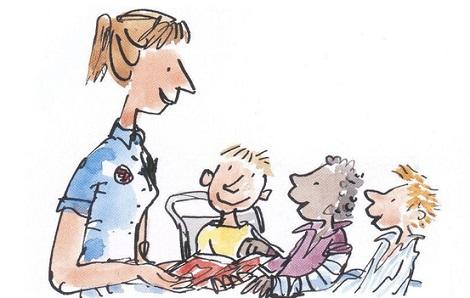
Published on: 13/09/19
For Roald Dahl Day, 13 September, we’re sharing 10 facts on the writer and his fascination with medicine.

Published on: 13/09/19
All information is taken from Roald Dahl’s Marvellous Medicine with the permission of the book’s author Professor Tom Solomon.
Roald Dahl is known as a famous writer of children's books and adult short stories – but he was also fascinated with medicine. Throughout his life Dahl was intrigued by what doctors do and why they do it. The author of Roald Dahl’s Marvellous Medicine, Tom Solomon, was a junior doctor when he looked after Dahl towards the end of his life. Their late-night conversations on the hospital ward led to Solomon writing the book following the fascinating insight Dahl had given him into his life.
Dahl believed his creative genius followed his own head injury, when he nearly died when his fighter plane went down in World War II (Dahl was a pilot). He was intrigued by all manner of neurological conditions and spent time supporting both adults and children’s neurology and neurosurgery services.
Roald Dahl’s son, Theo, was a baby when a taxi hit his pram in New York resulting in a severe brain injury and hydrocephalus. Numerous problems with blocked shunts led to Dahl inventing a new valve to treat the condition (the Wade-Dahl-Till valve); a paper on the valve was published in The Lancet in 1964 and the valve was later produced in its thousands. Dahl joined meetings of parents whose children were also affected by hydrocephalus, and by spina bifida. This group was the forerunner to the charity ASBAH, which then became Shine.
Dahl is considered a pioneer of rehabilitation as we know it today. His first wife, Patricia Neal, had a stroke. Dahl taught her to talk again, pushed intensive treatment for Pat, and devised a new innovative rehabilitation scheme. This was taken up by others and grew into a whole movement that was a key step in the formation of The Stroke Association.
Gobblefunk, the strange mixed-up language of the book BFG, originated from Dahl listening and helping his first wife Patricia learn to talk again after her stroke.
Olivia, Dahl’s oldest daughter, died from encephalitis (inflammation of the brain) at the age of seven (early 1960s). This was caused by measles virus and was very sudden. Twenty years later Dahl wrote an open letter urging parents to vaccinate for Sandwell Health Authority, which summarised the dreadful day. The Encephalitis Society is one of six charities that benefit from the royalties from Solomon’s book.
Dahl went out of his way to help seriously ill children. The Roald Dahl’s Marvellous Children’s Charity was established in 1991 (by Dahl’s second wife Liccy, in memory of the writer) to help make life better for children with serious and rare conditions and their families. The Roald Dahl specialist children’s nurses support children’s medical and emotional needs.
Dahl always said if he weren’t a writer, he would have liked to have been a doctor.
Dahl minimised his role when he talked about his critical part in medical interventions and credited others. This is the case with the groundbreaking WDT valve and with the revolutionary approach to stroke recovery.
Dahl inspired many throughout his life, and this went far beyond his work as a writer.
‘Somewhere inside all of us is the power to change the world’ – Matilda.
Roald Dahl’s Marvellous Medicine was published in 2016, written by Tom Solomon.
Walton Centre NHS Foundation Trust and Royal Liverpool University Hospital and Director of the National Institute for Health Research Health Protection Research Unit in Emerging and Zoonotic Infections at the University of Liverpool; Head of the Brain Infections Group; and Professor of Neurological Science.